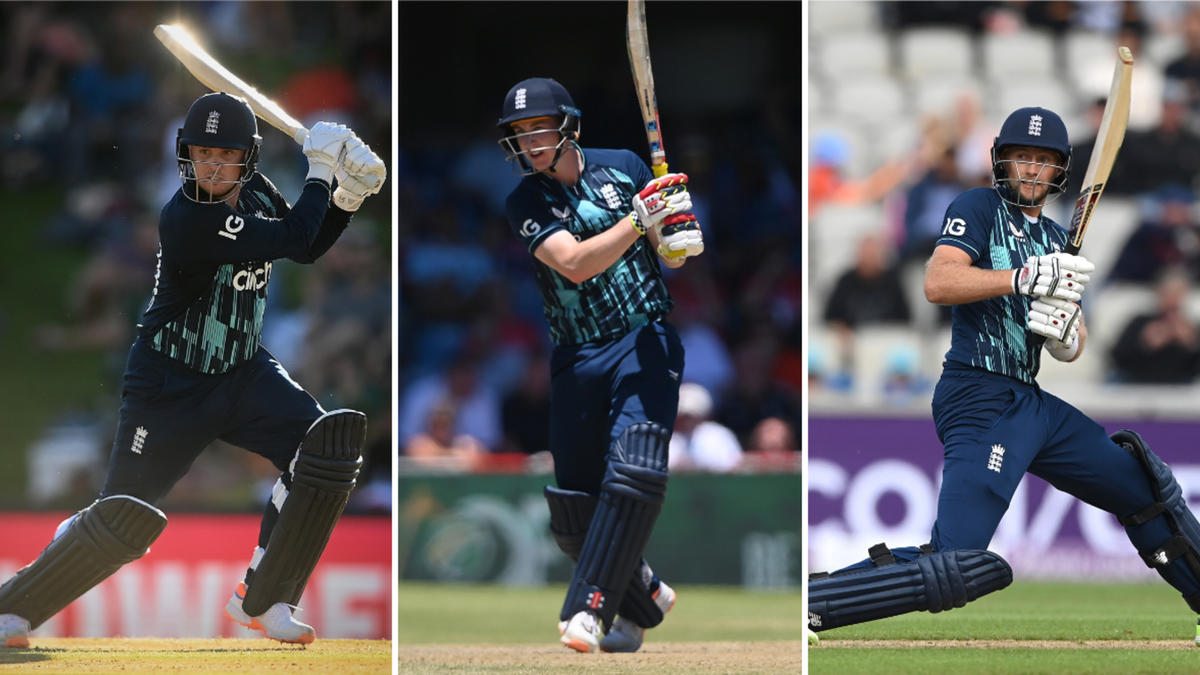
England’s World Cup top six is starting to solidify, but there are still some questions to be ironed out before they name their squad for the competition in October.
Despite losing the first two ODIs against South Africa, there are definite positives to come out of the three-match series so far, particularly regarding England’s batting line-up. Jason Roy’s 113 on Friday was his first score of fifty-plus in seven months in ODI cricket, and Moeen Ali’s timely 51 on Sunday was his highest ODI score in over five years. Harry Brook’s 75-ball 80 in his second ODI match showed his quality, as he has in all other areas of international cricket in his early career, suggesting that he could be a more than adequate replacement for Eoin Morgan at No.4.
Nevertheless, while tentative returns to form from some of their regular fixtures and positive signs down the pipeline are promising, problems still exist which could destabilise England’s batting lineup in the eight-month lead-in to the World Cup.
The first unknown is the severity of Jonny Bairstow’s injury. Of the 13 openers who have scored over 2,000 runs in ODI cricket since the start of 2017, none have a higher strike rate than Bairstow and only Roy joins him in scoring at more than a run a ball. While it’s hoped that Bairstow will be ready to play again at some point in England’s home summer, there is no return date yet. Should Bairstow not be able to reprise his role alongside Roy for the World Cup, his most likely replacement at present looks to be Dawid Malan. Often used by England as a stop-gap to fill in while their favoured options rest or recover from injuries, Malan’s numbers in the ODI format are often overlooked. From his 14 matches he averages higher than both Roy and Bairstow, and his strike rate of 96.33 should silence those who point to his T20 performances to discredit him in the fifty-over format.
The other option at the top of the order, Phil Salt, seems to have slid down England’s pecking order since he scored his maiden international century against the Netherlands last year. While included in the squad for the South Africa series, Malan has been favoured at the top, and with Roy’s century earning him breathing space from those questioning his continued selection, Salt’s route back into the first-choice XI looks tough. Added into the mix is Alex Hales’ return to England availability, which could see Salt slip even further from a starting spot.
Moving to No.3 and there is little debate that Root will slot straight back in as the World Cup draws nearer. While scheduling and the Test match captaincy have meant he hasn’t been the regular fixture he was in the lead-up to the 2019 tournament, his status as a true ODI great places little doubt over his standing in England’s thinking.
From his innings on Sunday, Brook looks likely to follow on from Root at No.4. Should Brook’s form not hold up after a fast start, Ben Duckett, whose sweep-heavy game could thrive in India, is an option at No.4, as is Malan. A backup option would be James Vince, who averages over 55 at No.4 in ODIs, but hasn’t managed to make the transition into a main contender since scoring his only century in the format in 2021. Sam Billings is another in the backup category, strangely overlooked by England despite averaging 47.88 since the 2019 World Cup.
With Jos Buttler inked in at No.5, the final spot in the top six is where things look most tricky. Moeen’s difficulties with the bat since being asked to fill Ben Stokes’s role have evidenced just how big the chasm left by Stokes’ absence is. While batting Moeen at six allows England to field a four-seam, two-spinner attack, it is optimistic to hope that his second-ODI half-century marks a significant turning point in his form.
A solution for England could be to look at playing another specialist batter in the role, with Root’s off-spin providing some relief with the ball. But Buttler’s captaincy so far has shown he prefers a depth of options to call upon in the field. There are other all-rounders they could call upon – Liam Livingstone, or even Will Jacks – at six with Moeen or Sam Curran at seven. But Livingstone (one fifty in 12 ODIs) and Jacks (uncapped) are both still unproven in ODIs. Should one nail down a spot, they and Root should offer Buttler plenty of variety with the ball alongside a strengthened batting lineup. The caveat is that they would be limited to a three-seam attack with Adil Rashid taking one of the bowling spots – not necessarily a deal-breaker in subcontinental conditions.
There is one solution to almost all of England’s problems. A lot of the issues that England have faced in ODI cricket over the last year, and before when he wasn’t available to play, have stemmed from Stokes’ absence. Beyond the imbalance in the side he exposes when not there, Stokes is missed purely as a batter – at No.5, he averages 49 and strikes at 92. His ‘unretirement’ could give Buttler a welcome solution to many of his current selection headaches.








